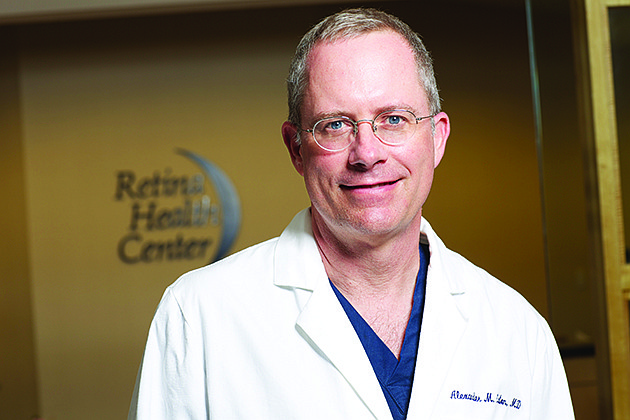- July 26, 2024
-
-
Loading

Loading

Boxes piled up in Dr. Alexander Eaton's ophthalmology practice in Fort Myers are one clue there's more going on there than an ordinary medical office.
Like his colleagues, Eaton, director of the Retina Health Center in Fort Myers, sees patients all day. But at night, his offices transform into a workshop of medical devices.
Eaton's latest invention is a device that records how patients use their eye drops. A tiny camera snaps onto an eye-drop bottle and connects to a recording device the size of a cigarette pack. Each time patients use the eye drops, they record how well they accomplish the task.
Eaton and published research suggests most patients miss the mark when they use eye drops. “Compliance is a huge problem with patients,” Eaton says. “There is without a doubt a huge need for better delivery of drops.”
Besides missing the eyeball with a drop, patients often contaminate the tip of the bottle by touching the eyelashes or the eyelid. In addition, patients often squirt more drops than they should.
In fact, patients are so bad at applying eye drops themselves that Medicare allows prescriptions to include 30% more liquid in each bottle than they need, creating waste. It costs $80 to $100 for a bottle of generic eye drops and as much as $200 for name brands that last a month.
Eaton reasons that even if patients could cut 10% of the wasted liquid in a bottle by being more accurate, it would easily pay for a monitoring device such as the one he's developing. Eaton estimates his device could cost $100 to $200 if it goes into production.
Eaton recently completed a pilot study of 37 patients in the clinic and 38 patients at home and presented the findings at the American Academy of Ophthalmology meeting in Chicago. Nearly 90% of patients were not able to properly deliver the eye drops at least once during the clinic phase. In the at-home phase, none of the patients was able to properly apply the drops, Eaton found.
The video device can be used much like a sports replay, giving both the physician and the patient insight into how to improve, Eaton says. “It allows us to do more for the patient,” he says.
Further in-depth research is about to begin before insurers, clinical researchers and government health programs widely adopt the use of the device. “They're going to want to see more data,” Eaton says.
Drug manufacturers might not be too keen on the idea because it could significantly reduce the amount of drops people use, Eaton acknowledges. “It's really focused on containing costs, reducing waste and saving money for the system,” he says. “We are unique in that approach to the problem.”
Eaton acknowledges the challenges of creating a new medical device. He and his staff began researching the idea two years ago and the device is now in its 10th version. “We had an optical engineer who is working on another system,” he says. “Over the last two years we refined it.”
Follow Jean Gruss on Twitter @JeanGruss